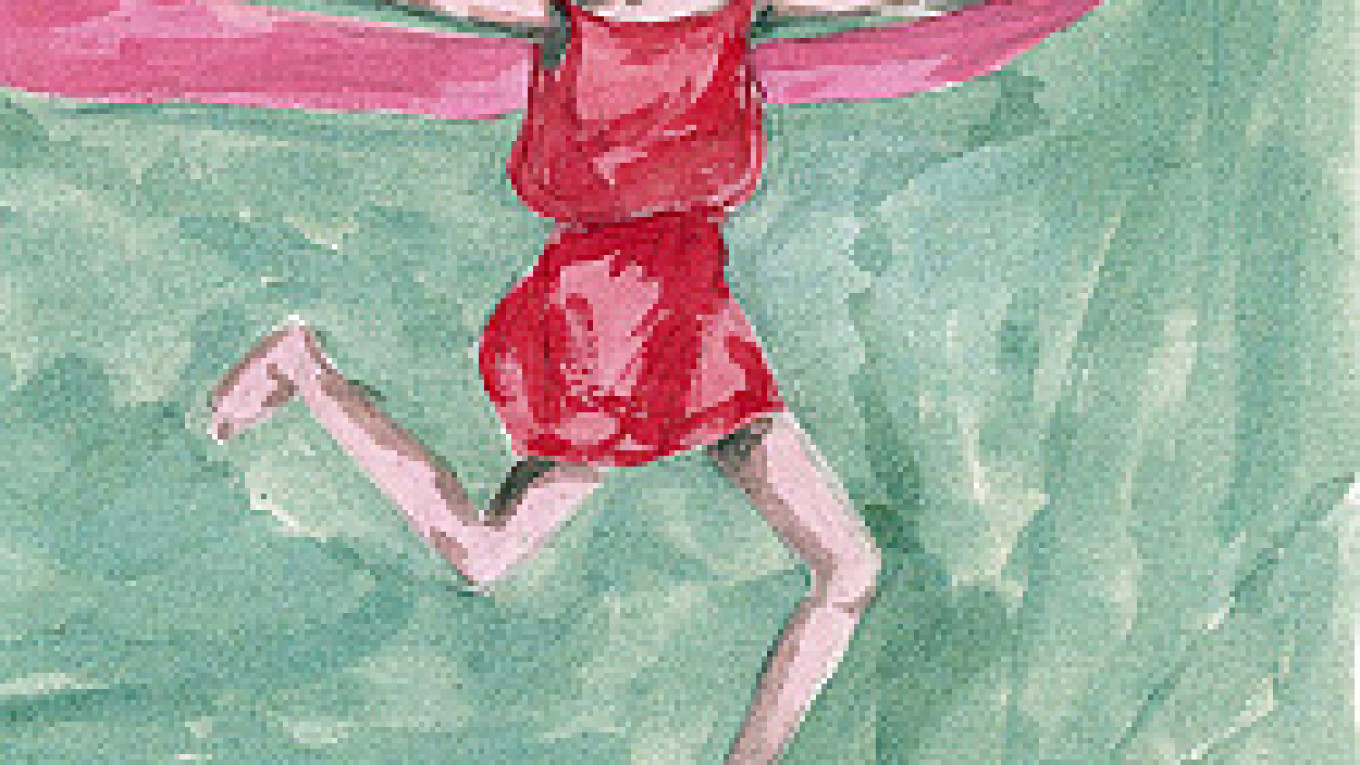Housed in GOST gallery, "A Classical Profile of Dance" brings together the paintings, sketches and sculptures of three Russian artists who were inspired by Duncan's dance: Matvei Dobrov, Vasily Vatagin and Nikolai Chernyshev.
The paintings and sketches depict Duncan and her Moscow students -- dubbed Duncanshi or Duncanyata -- in soft, almost whimsical strokes. Vatagin's paintings, in particular, have a mystical quality that soothes the viewer: The colors are subdued, the lines aren't exact and the facial features are blurry, but the overall effect portrays the freedom and candor that characterized Duncan's choreography.
Vatagin specialized in painting animals, and one can see his experience with the natural world in his paintings of dancers, curator Yelena Grebneva said during a recent visit to the gallery, a quaint, two-story house located on a quiet side-street near Kropotkinskaya metro station.
"Animals don't pose for you, don't pause for you," she said. "Neither do dancers, so it's a complicated task."
Indeed, Duncan's dancers would never have been expected to take up the rigid poses that traditionally dominated ballet. Known as the mother of modern dance, Duncan rejected as unnatural ballet's stiff formations and strict rules of posture. Her work focused on interpretation and freedom of movement, and her dancers were generally barefoot and clad in loose Greek-inspired gowns, as the exhibition's works show them.
Duncan's personal life was governed by principles no less rebellious than her choreography, although the result certainly wasn't as pleasant to look at. She had many lovers -- at a young age, she swore never to marry, although she broke that oath in 1922 with her marriage to poet Sergei Yesenin -- and bore two children out of wedlock by different men. Her children drowned in 1913 when the car they were riding in with their nanny plunged into the River Seine. She later began a torrid love affair with poet Mercedes de Acosta and was rumored to be involved with several other women.
It was her rejection of the status quo that brought her to Moscow in 1921, just after the Revolution.
"She thought she could realize her dreams here, especially the development of her school," Grebneva said. "She was reformer, a revolutionary of dance, and she saw an analogous situation in Russia at that time."
Her marriage to Yesenin, who was 17 years her junior, was turbulent and short-lived. They wed not long after Duncan arrived in Russia and separated in 1924, the same year she returned to the United States. A year later, Yesenin committed suicide.
Although Duncan spent just a few years in Moscow, she enjoyed vast popularity in the country.
"She's always been highly regarded here," Grebneva said. "Her themes were welcomed here, like the theme of this exhibit: the revolution of classical dance."
By the time of her death in 1927, Duncan had gained notoriety for her scandalous behavior and habitual drunkenness. Her death was just as dramatic and jarring as her life: She was dragged behind a friend's car when her long scarf became tangled in one of the wheels.
But as the GOST exhibition proves, Duncan's art is more compelling today than the memory of her tumultuous reality, and it is this softer side of her legacy that will live on.
"She's a paradox," Grebneva said. "Her creative base was classical dance, but in her ideas she drew from the future, not the past."
"A Classical Profile of Dance" (Antichny Profil Tantsa) runs to Oct. 20 in GOST Gallery, located at 5 Maly Vlasyevsky Pereulok. Metro Kropotkinskaya. Tel. 969-1658, 8-905-778-0147.
A Message from The Moscow Times:
Dear readers,
We are facing unprecedented challenges. Russia's Prosecutor General's Office has designated The Moscow Times as an "undesirable" organization, criminalizing our work and putting our staff at risk of prosecution. This follows our earlier unjust labeling as a "foreign agent."
These actions are direct attempts to silence independent journalism in Russia. The authorities claim our work "discredits the decisions of the Russian leadership." We see things differently: we strive to provide accurate, unbiased reporting on Russia.
We, the journalists of The Moscow Times, refuse to be silenced. But to continue our work, we need your help.
Your support, no matter how small, makes a world of difference. If you can, please support us monthly starting from just $2. It's quick to set up, and every contribution makes a significant impact.
By supporting The Moscow Times, you're defending open, independent journalism in the face of repression. Thank you for standing with us.
Remind me later.


